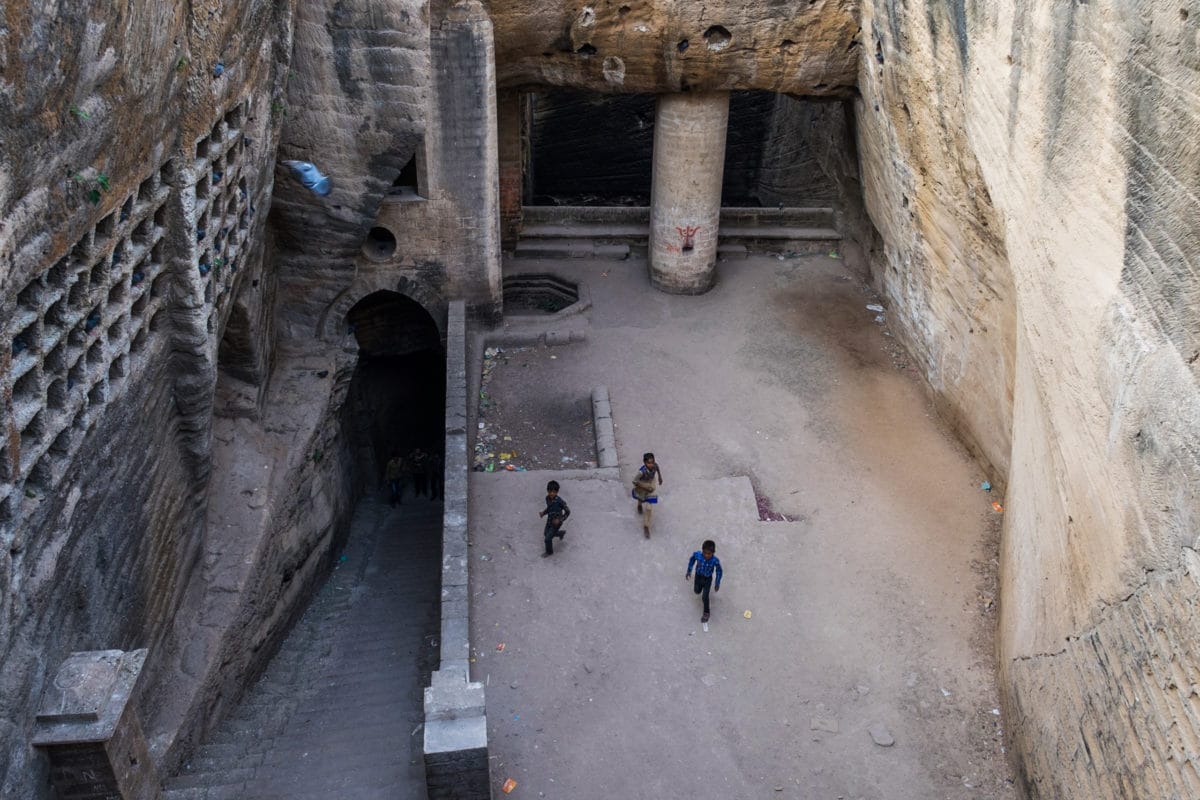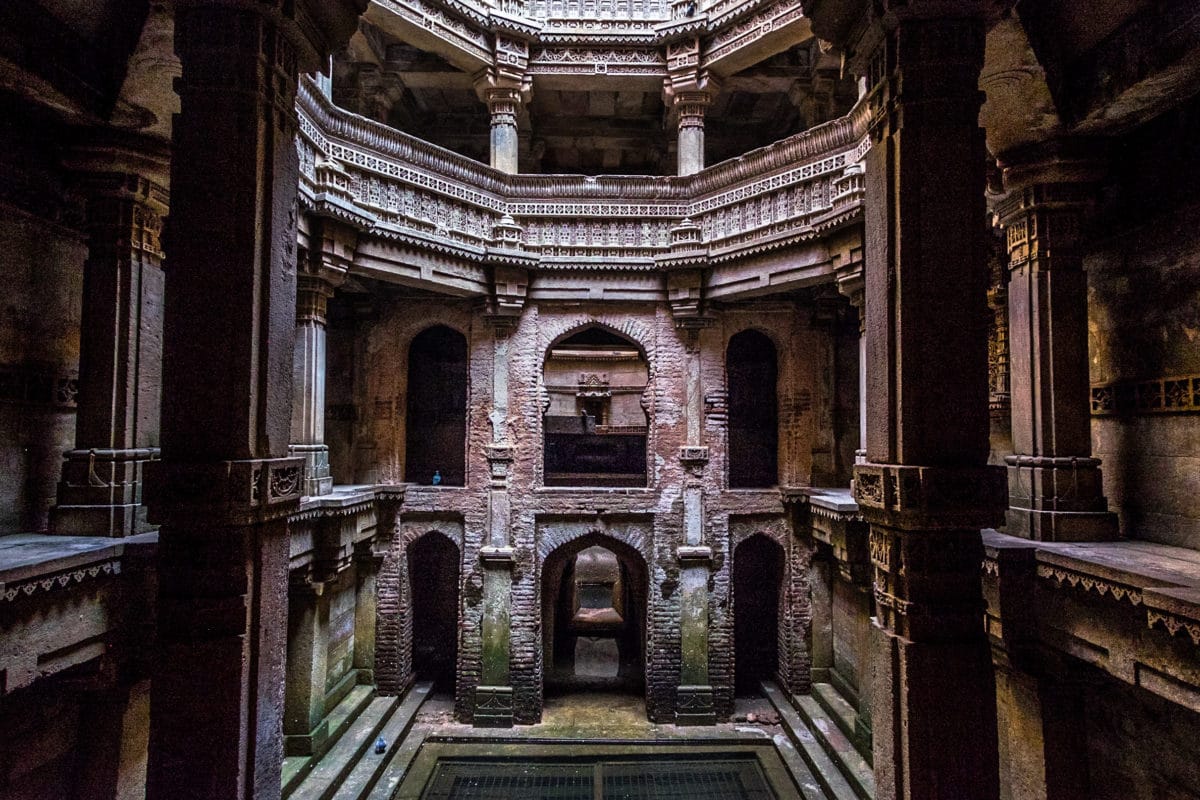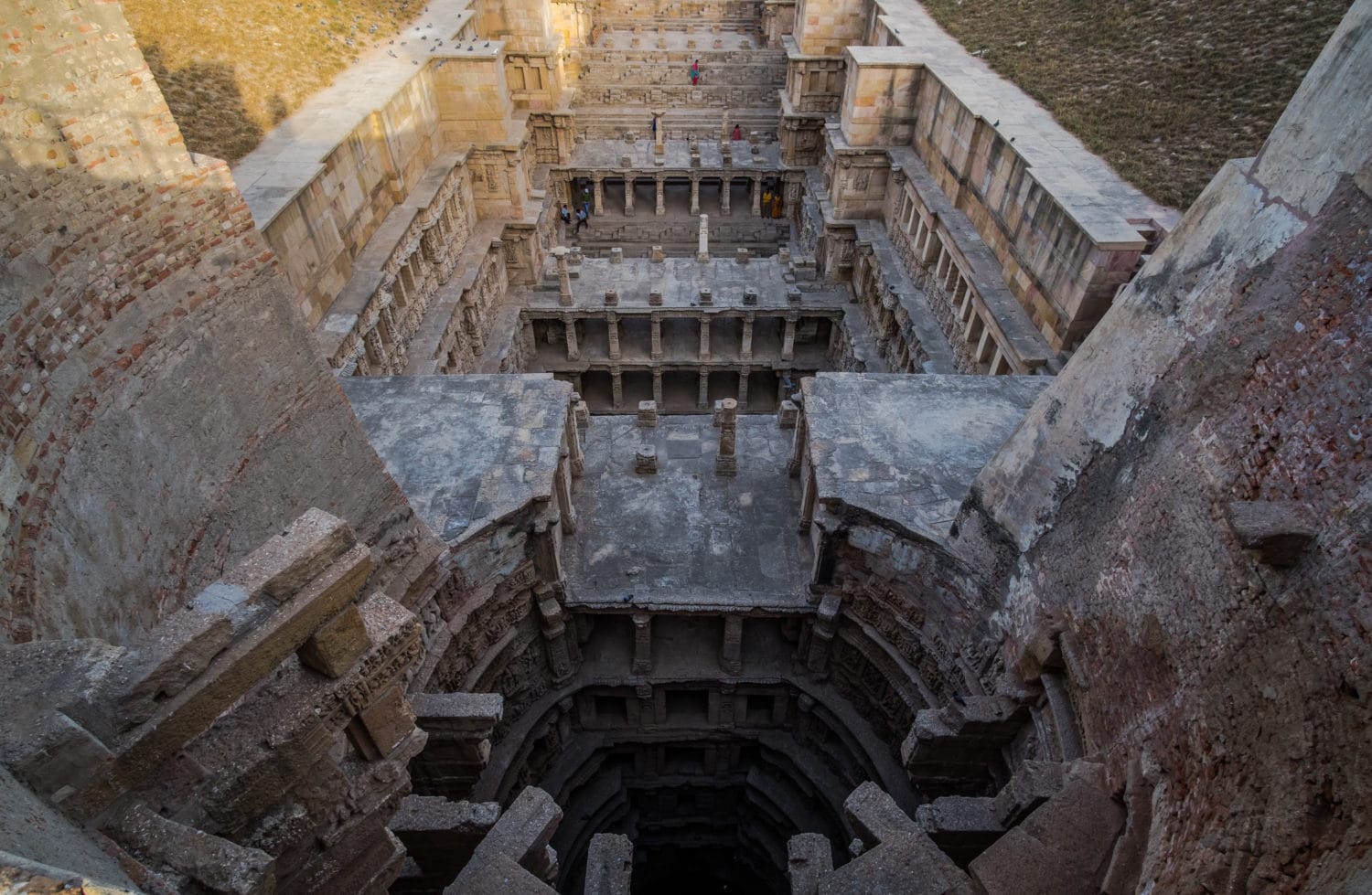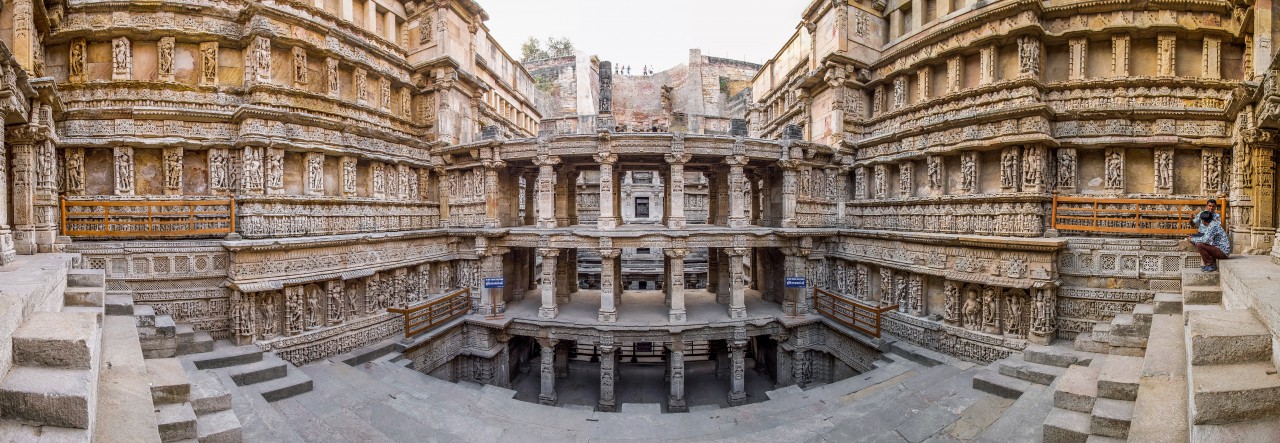Stepwells are literally as the name suggests, deep rock cut wells with steps leading down to them. They don’t really sound terribly glamorous, but one look at any of the ancient stepwells that are strewn around western India and parts of Pakistan, and you realise that these are anything but ordinary wells. Dating as far back as 300-400AD, there are examples of intricate four and five story deeps wells in several Indian states, including Haryana, Rajasthan, Maharashtra, Gujarat and others. There are indications that this form of deep, detailed wells might have existed during the Indus Valley Civilization, that had a perfect water system.

Built primarily for the purpose of retrieving water, the wells were also places of social gathering and worship, especially for women. Built several stories down, they provided respite from the harsh summers of semi arid Western India, and were cool quiet retreats. Thus, over time, many have been built with intricate carvings along the walls, columns and pillars, with stories from religious texts, scenes of life and morality, and in some cases, were a chance for local artisans to display their skill and prowess. Many tell the tales of the rulers who commissioned them, and by the 15th century these spaces were no longer mere wells, but spaces of art and culture, history and life.
While in Gujarat we saw several stepwells, there are reportedly 120 throughout the state, two, left us completely in awe of their beauty and form. The ‘Adalaj Vav’ north of Ahmedabad and the ‘Rani ki Vav’ or Queens Stepwell are some of the finest structures that can be seen above or below ground.

Built in 1499, the ‘Adalaj Vav’ (vav in the Gujarati language means stepwell), was commissioned by a local Hindu ruler who was killed in battle by a neighbouring Muslim rival. Taken in by the beauty of the work that had already begun and keeping his promise to the rulers widow, the victor completed the beautiful step well, and subsequently had the masons sentenced to death so another might never be built. A rather common theme by rulers of the past! Legend has it that once the well was completed, the widow, who had promised to marry the Muslim King, committed suicide in the well, and her story is recorded on the walls. Well maintained, with an air of serenity, it is one of the most beautiful places we’ve seen so far.

The Rani Ki Vav, a UNESCO world heritage site, was built in the early 11th century, by Queen Udayamati, in memory of her husband. Ornate and magnificent, the walls, balustrade, columns, almost every single inch is covered in carvings, all devoted to Vishnu and his many forms. Built outside the dusty town of Patan (also known for the stunning Patola saris), the stepwell was flooded by the nearby Saraswati River, supposedly sometime after the 15th century, and completely silted over. It was only in the early 1980s that the well was rediscovered, and upon excavation found to be in fairly intact, with the carvings in pristine condition.

We have now been bitten by the ‘stepwell bug’ so to speak and hope to have the chance to see some of the amazing wells in Rajasthan, Haryana and Delhi. Water has always held a central role in civilisations, and these magnificent structures make more explicit the ancient concept of the sanctity of water. Built with great thought and reason, these stepwells are akin to inverted temples, where you walk down to the water surrounded by beauty and tranquility.
Some Useful Information:
There are stepwells strewn all over Gujarat (there are others in Rajasthan, Haryana and Delhi as well) but the Rani ki Vav and Adalaj Vav are amongst the nicest. Both can be easily accessed from Ahmedabad. The Adalaj Vav is just about half an hour outside Ahmedabad and the Rani ki Vav is in Patan which is about 130 Kms away. It is worthwhile to do both as a day trip from Ahmedabad and stop on the way at the Sun temple at Modhera as well. If you are so inclined you can also check out the centuries old method of Patola Sari weaving in Patan which is quite fascinating.
Fabulous photos and nice description! Enjoyed reading this!
Thanks Chaitali, so glad you enjoyed it 🙂